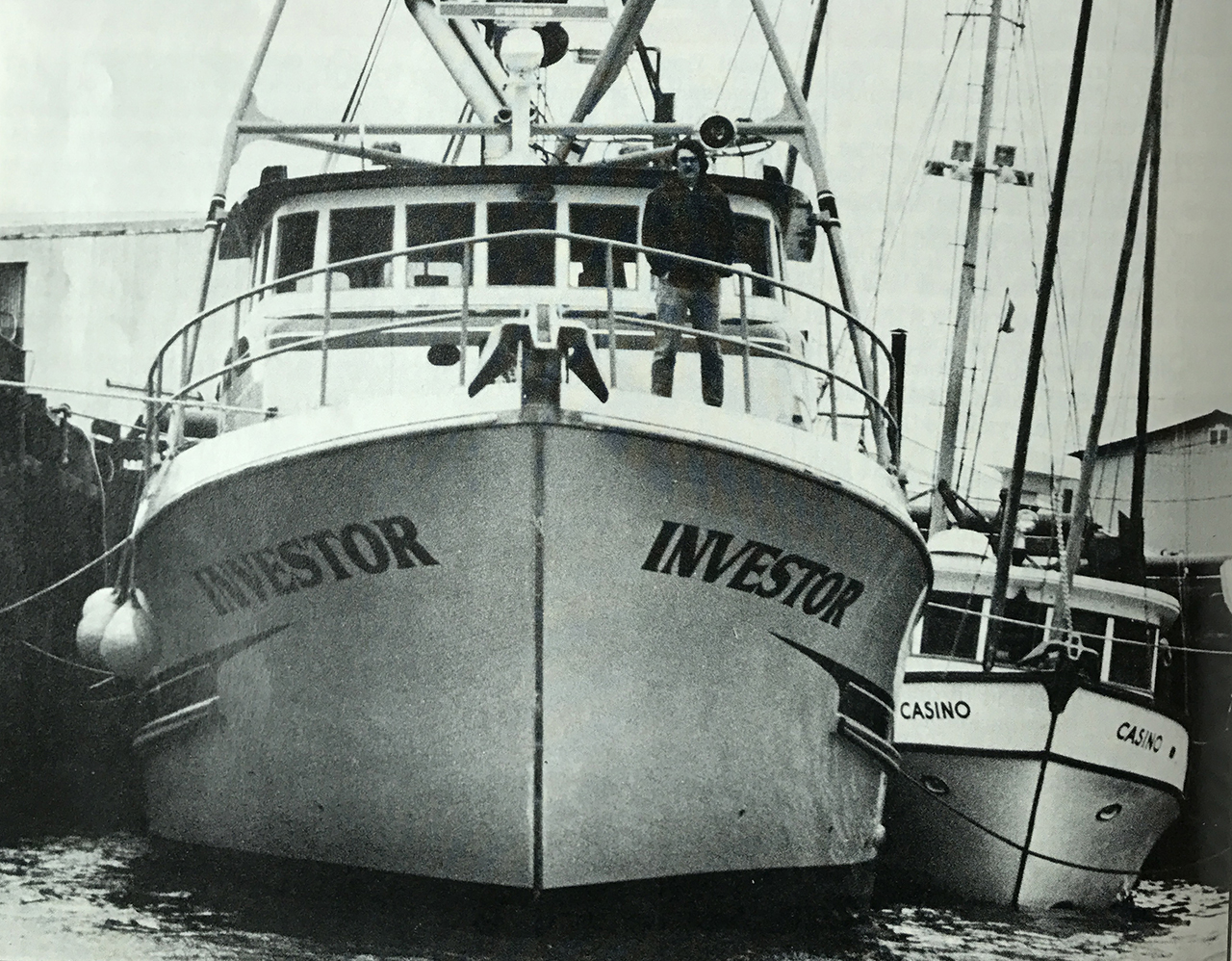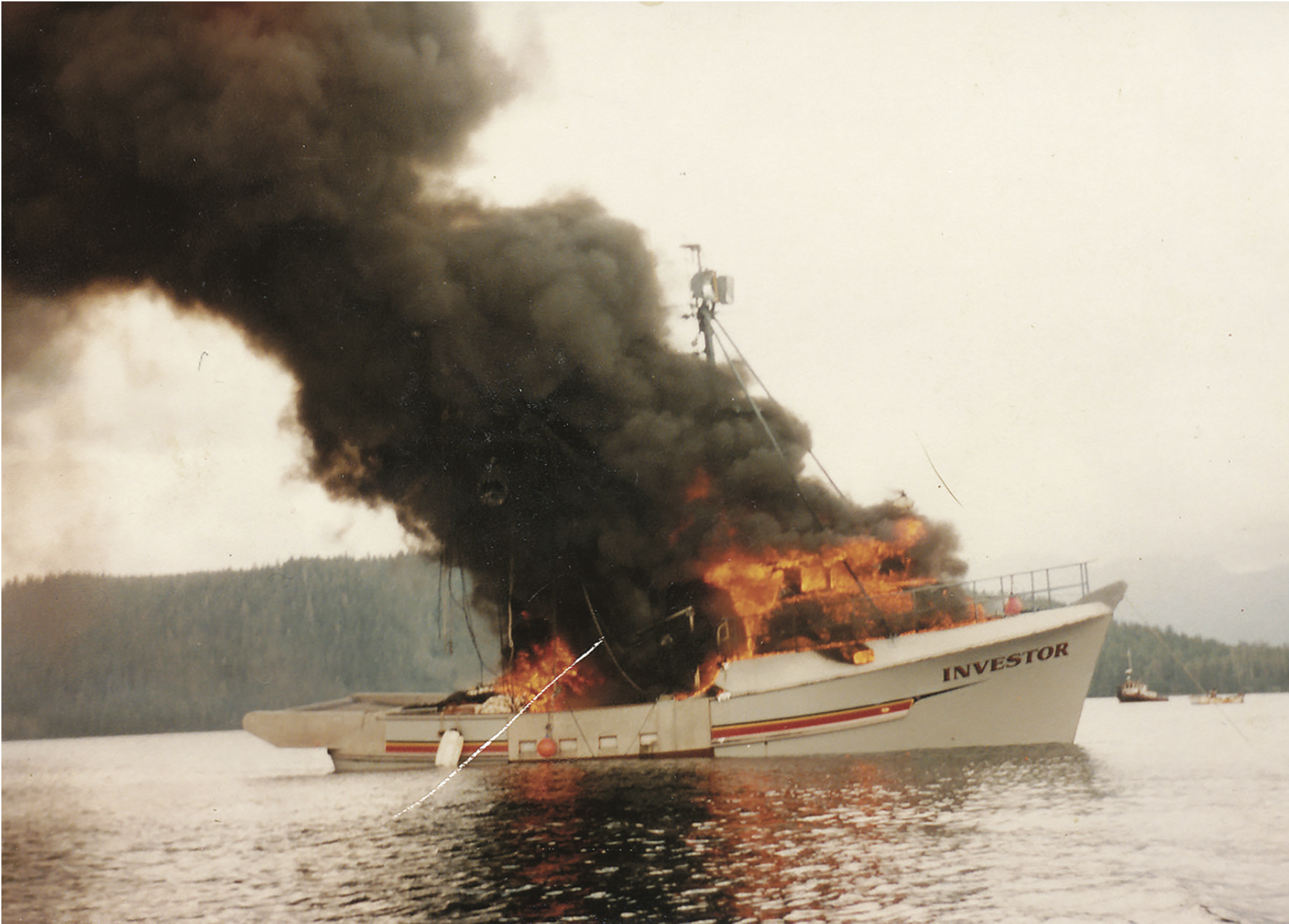Phillip Weidner wanted the jury to know that the prosecution had failed to notice something crucial about the killer, in what he characterized as its “rush to judgment.” What the prosecution had missed, according to Weidner, was the true nature of the crime. The Investor murders, he suggested, were “totally consistent with a professional killing.”

“And I’m just talking about circumstantial evidence here. That this evidence is totally consistent with a professional killer. The evidence will show that the real killer, not John Kenneth Peel, but the real person that set that boat on fire, coolly, audaciously, in front of that whole town, set that boat on fire, drove back, got out of that skiff and disappeared into thin air. That’s the mark of a professional killer. He doesn’t care about being seen. He’s never going to be seen again. The shots themselves, the .22 shots in the head. A terrible thing to talk about, but the mark of a professional killer.”
Crucially, a hitman’s job is to ‘shoot to kill’. The drift into this lethal practice not only involves hitmen separating their morally-responsible selves so as to be able to kill, but also depersonalising their intended victim.
David Wilson & Mohamed Rahman, Becoming a Hitman, The Howard Journal, 2015
Weidner got one thing right. A professional killer would do the deed and not care about being seen because, yes, “he’s never going to be seen again.”

Trouble is, that logic applies only to the killings themselves — which occurred a full day BEFORE the boat fire. By hanging around for a day, by going back to the Investor, by torching it after failing to sink her, the killer risked being seen again and again. And, indeed, he was seen by witnesses on two separate days.
There are more details to process here, though, and with each addition, Weidner’s theory of the crime looks more ridiculous.
- One of the hallmarks of a professional hit is the ability to leave the scene without anyone being wise to the hitman’s role in the killing. Part of the rationale here is to distance the killer from those who want the victim dead. It’s called plausibly deniabilty. “The master hitman… will go into an area, carry out the job and then leave again.” [David Wilson, Becoming a Hitman].
- Getting in and out of Craig, Alaska, though, is not an easy proposition. Unlike an urban area, at some point you need a boat or a plane to escape this remote village. Though not impossible, the logistics are daunting.
- Hiring a plane is risky, because it’s traceable.
- Hiring a boat is out, for the same reason.
- Maybe rent a car and take the ferry in/out from Hollis? It’s a thirty minute drive and the boat runs only occasionally.
- And having the hitman’s contractor provide such transport? That destroys plausibly deniability.

- The motive for the Investor hit was, according to Weidner, Mark Coulthurst’s alleged failure to pay for cocaine fronted him by an organized crime syndicate. In this sense, his killing was likely meant to serve as a warning to other drug dealers: “Pay up or you’ll wind up dead like Mark Coulthurst.” This points to Mark Coulthurst being the singular focus of the hit.
- Since a professional hitman would be unknown to Coulthurst — and any witnesses onboard the Investor — he could target Mark without fear of being identified. That’s not what happened. Instead, the so-called professional hitman wasted precious time.
- Wasted precious time by killing everyone else on board, including the two Coulthurst children. Did he feel like he had to, given the difficulty of escape? If so, then why…
- Waste time by taking the Investor out to Ben’s Cove and trying to sink her?
- Waste time by returning to the Investor the next day and torching her?
- Nullify the signal you’re trying to send to other dealers? Leave the damn boat in Craig!
- Buying gas to torch the Investor does not track with a professional hitman either. Again — shoot Mark Coulthurst, get off the boat and leave town. Don’t risk being seen at the gas station.
- And what about Weidner’s assertion that the boat was torched in front of the whole town? Didn’t happen. You can’t even see into Ben’s Cove from Craig.

(copyright Leland E. Hale)
Okay, maybe a hitman is involved. A dumb, inexperienced, clumsy hitman. Even then, it stretches credibility to think such a person could make that many mistakes. Definitely not a professional.
And here’s the obvious piece, staring us in the face: Why Craig? Wasn’t Bellingham or Blaine a more promising venue for a hit? Just make the kill and slip into Canada. Hell, in those days, you didn’t even need a passport.
What makes more sense, though, is a panicked amateur trying to cover his tracks. This is a someone who can’t depersonalize the victim because he knows him well. Someone who is also known by the other victims. He tries to hide his crime, first by attempting to sink the Investor. Then, when that fails, he resorts to arson. Simple.
Of course, Phillip Weidner didn’t have to prove anything. He could merely suggest an alternative theory and create reasonable doubt. That was enough.
Excerpts from the unpublished original manuscript, “Sailor Take Warning,” by Leland E. Hale. That manuscript, started in 1992 and based on court records from the Alaska State Archive, served as the basis for “What Happened in Craig.”
Copyright Leland E. Hale (2020). All rights reserved.

Order “What Happened In Craig,” HERE and HERE. True crime from Epicenter Press.
Hello, I’m a big fan of your book. Do you know if Mark Coulthurst’s glasses were ever recovered? I was reading your book and I saw that the skiff operator had glasses on. This case really hit home for me. I’m from a fishing town on the east coast, slightly bigger than Craig, I find it hard to believe someone could get away with something so brazen and brutal in a town with so little population, literally where everyone knows your name.I plan on looking into this further and bringing more eyes (ears) to it via podcast. If you would like to be involved I’d be honored
The evidence that the skiff operator was wearing similar glasses is, sadly, the only hint of Mark’s eyewear as far as I know. Good luck with your venture.